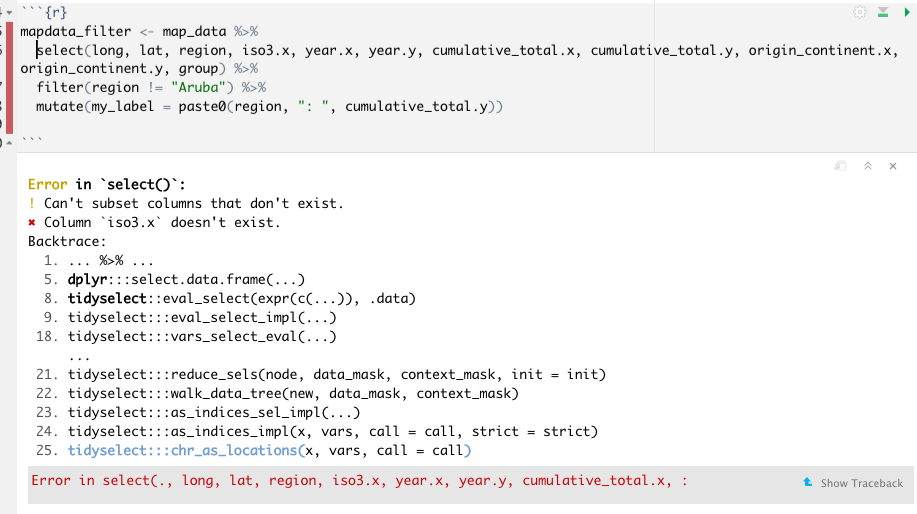

The environment browser invoked by browser() is the same one used in all of the other debugging facilities, so it can be considered the lowest-level debugging tool.
RSTUDIO IF STATEMENT CODE
Unlike an editor breakpoint, the browser() statement is actually part of your code, so it needs to be applied like any other code change in order to become active (by sourcing the containing document, rebuilding the containing package, reloading the Shiny application, etc.). Here, for instance, it’s used to halt when a function is about to return TRUE: You can put browser() anywhere in your code to stop at that point in the code for debugging. The R function browser() halts execution and invokes an environment browser when it is called. In most cases, you can source() the file to resolve the problem. The circle outline indicates that RStudio is aware of the breakpoint, but that it hasn’t been injected. If the function object doesn’t exist yet (for instance, because you haven’t called source() on the file), or the function object doesn’t match the contents of the editor (for instance, because you’ve changed the file since the last source()), the breakpoint will be deferred. R function objects that include this tracing code have a red dot in the environment pane, indicating that they contain breakpoints.

Editor breakpoints take effect immediately and don’t require you to change your code (unlike browser() breakpoints, below).Įditor breakpoints work by injecting some tracing code into the R function object. You can do this in RStudio by clicking to the left of the line number in the editor, or by pressing Shift+F9 with your cursor on the desired line.
RSTUDIO IF STATEMENT HOW TO
How to manipulate strings and dates by writing your own headline generator.An simple method of iterating over multiple values.It’s worth knowing about the capabilities of RStudio for data analysis and programming in R. RStudio is a flexible tool that helps you create readable analyses, and keeps your code, images, comments, and plots together in one place. Writing functions with control structures RStudio is an open-source tool for programming in R.How to build your own soccer match prediction function:.Building upon the concepts in this tutorial, you'll learn: If you'd like to learn more, this tutorial is based on our R Intermediate course, which is part of our Data Analyst in R track. The if-else conditional will go between the brackets of the while loop. In our previous example, where 15 wins allowed us to make the playoffs, let's add an if-else conditional. Adding an if-else statement into our while loop is the same as adding it to our for loop. To do this, we'll need to add an if-else statement into our while loop. Now that we've printed the status of the team when they don't have enough wins, we'll add a feature tthat indicates when they do make the playoffs. Using an if-else statement within a while loop Let's write our first while loop, counting red dragon wins! Notice, that we continuously add 1 to the win total, so eventually, the win < 10 condition will return FALSE. Our loop will stop running when wins hits 10. If we were to write a loop for the following code: If the boolean expression results in to True the body of if statement is executed, otherwise R code in the specific block is skipped. code block: This is the expression that's evaluated. if statement is used when there is only one test condition and on the basis of that you have to take a decision.See variables naming conventions in the first course for valid variable names. value: This is an iterator variable you use to refer to each value in the sequence.For example, this could be a vector of numbers c(1,2,3,4,5). However, if there are no more values left in the sequence, this will return FALSE and exit the loop. In this diagram, for each value in the sequence, the loop will execute the code block. A for loop repeats a chunk of code, multiple times for each element within an object: Instead, we can perform the same action using a for loop.

Writing the results using if-else statements can work, but if our matches list contains 100 matches, it would be extremely cumbersome to write out each statement.

Indexing with will return a list object, not the value. Keep in mind-we're using ] when indexing, since we want to return the single value, not the value with the list object.


 0 kommentar(er)
0 kommentar(er)
